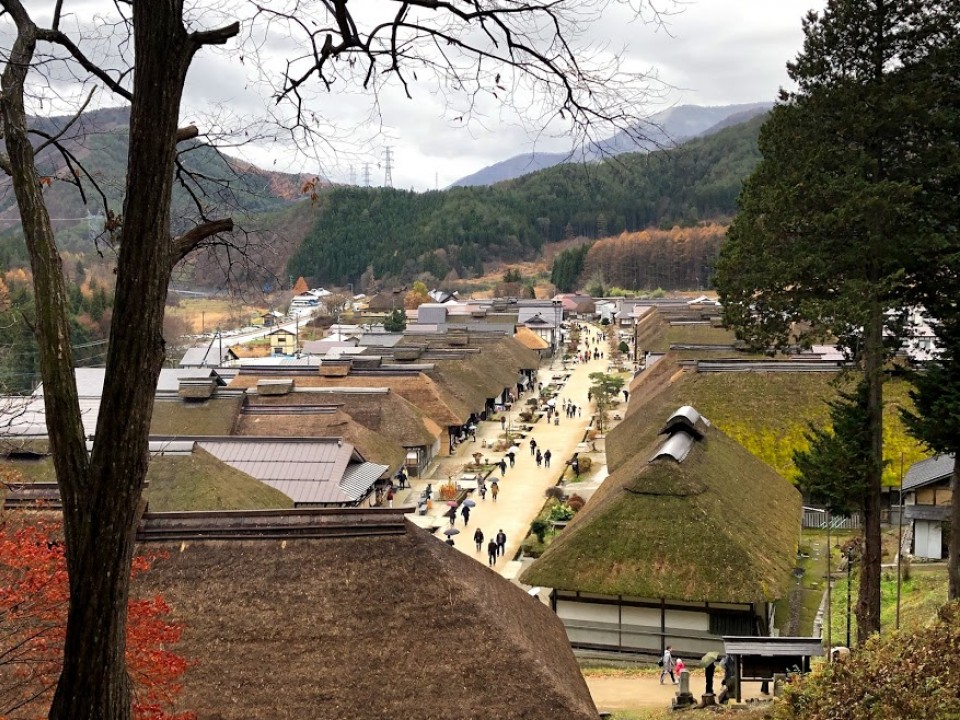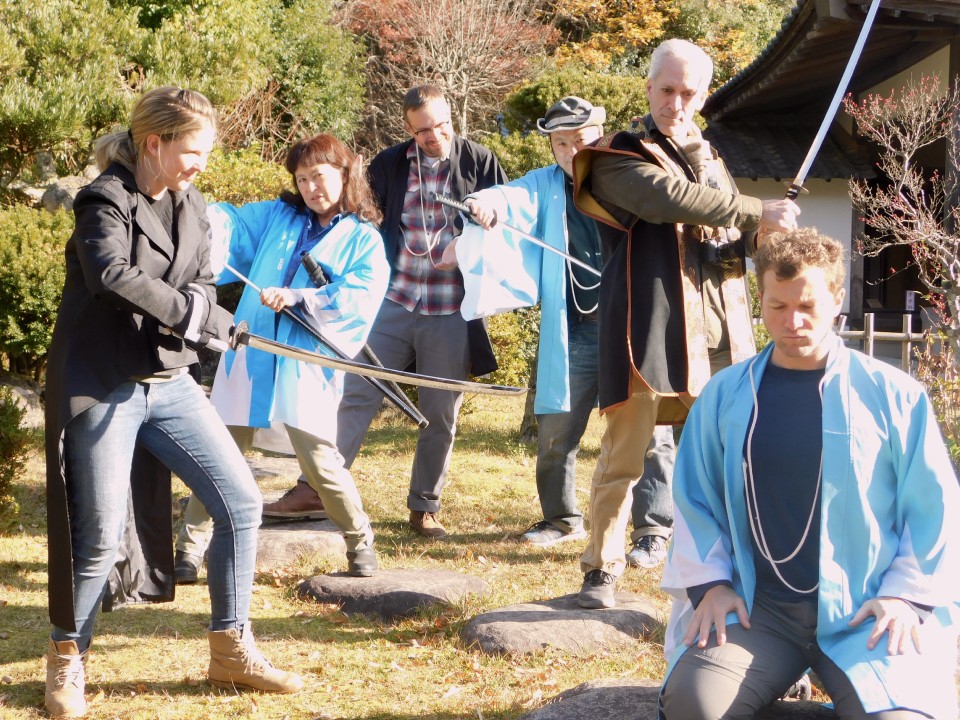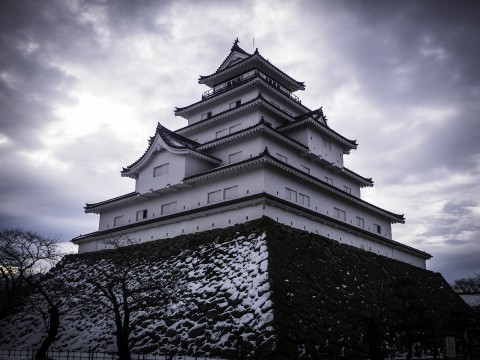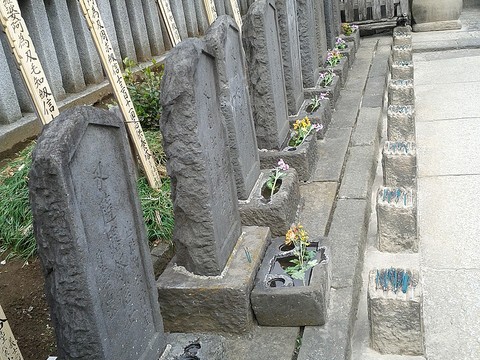Slip Inside the Cracks: Samurai Spirit Tourism in Fukushima Prefecture
Through the years, I’ve had many people “back home” ask me about Samurai Spirit and ninjas. Is there any place in Japan left where one can find these things?
This is a kind of question very difficult to answer. Of course, it is possible to find museums that feature many of the tools and stories of their history. It is also easy to find places to cosplay and imagine what it was like in an earlier era. You can also find many arts, crafts, and even spiritual practices like Zen meditation where the spirit is rekindled, albeit with contemporary modifications.
But is the spirit of samurai alive?
In our tour of central Fukushima, we visited four locations that are steeped in samurai history and culture - Shirakawa, Ouchijuku, Aizuwakamatsu, and Nihonmatsu. I expected to find some ancient relics and contemporary efforts to revive them, but found, instead, some pleasant surprises.
・Shirakawa
Komine Castle and daruma-making are probably among Shirakawa’s most revered tourist attractions. Nanko Park is famous, but it’s usually referred to as a great place to view cherry blossoms and the turning of the leaves in autumn. Its story of being the first public park in Japan is told almost as an afterthought, though it is said with a veiled sense of pride.
But this actually reveals an important story. In 1801, Matsudaira Sadanobu, the 12th lord of Shirakawa, constructed the park for commoners. Its lake and surrounding “nature” is man made, opened from the outset for the public and not just the noble classes like most Japanese gardens. The concept of “Shimin Kyoraku,” that the whole public should enjoy splendors together, ignoring the rigid social class structure, was more often celebrated without providing any real substantive examples.
Kyorakutei is the teahouse in the park, in which this concept was exemplified. It remains standing today, just as it was created. sitting in the teahouse, with a bowl of matcha and a sweet, one can imagine how a peasant farmer could have rejoiced in sharing the same bounty as the samurai, unbound by custom and ritual.
Here, the ideas that nature is nurtured by human endeavor, that we should live harmoniously with our surrounding environment, and that the greatest security and comforts are made when we use things resourcefully and by treading softly becomes obvious to the astute observer. In this observation is a lifetime of wisdom, condensed in a moment of tea.
・Ouchijuku
This town is a small “post-town,” on the important Aizu Nishi Kaido that linked Aizu to Nikko and, beyond, Edo. It was frequented by samurai, merchants, and the peasantry, connecting the rich craft traditions of Aizu to the noblemen living in Edo.
Being a special preservation district with many regional and national accolades, the kayabuki straw roofs are well maintained. Certainly the nostalgic look and feel, combined with the close proximity of the structures on one road, make it attractive.
But I’m reluctant to accept that this kind of preservation is sustainable. Busloads of tourists don’t seem to bring any long-term resolution. I believe that hundreds, or a few thousand, younger women who visit the village because of a nice blend of tradition with the contemporary, an avenue of cafes, bars, crafts, and art - like the machiya of central Kyoto - is its future.
These kinds of somewhat trendy venues are more likely to use the fruits of local farm and village production, in meals, beverages, and handicrafts. Many of the visitors will return, as in Mashiko and Kanazawa, and a handful of them will want to stay - permanently - to escape the pressures of the urban jungle. By adding a small handful of escapees a year - human transfusions - the spirit of Edo can still prosper today.
・Aizu Wakamatsu
Aizu is the jewel in the regional crown. It is the most inaccessible, today, because the Shinkansen has become the main thoroughfare to Tohoku. But with Tsurugajo at the center and the byakkotai at heart, the city is the soul of samurai culture in Fukushima.
But museums and tributes seem, at first, to be all that’s left today. Not so.
At Nishinkan, the epitome of samurai schools, one can take part in Kyudo, Japanese archery. Unlike archery, kyudo is not entirely technical. While technique is important, the skill is overwhelmed by art. Like Judo, Kendo, Shodo, and Chado, it is a “do,” characterized by the kanji for street, or a “way” - the Way of the Bow.
After three arrows, I figured out that strength is not of primary importance. After five, I learned that to shoot straight, it is all really a single motion. After ten, I was certain that the art was really not “archery,” but controlled breathing.
I completely forgot that my hand and fingers were bleeding. I’m certain that after an hour, over days and weeks of this, kyudo would cease to be sport and become a way of life itself.
・Nihonmatsu
The Kaisekimei inscription at the gate to Kasumi-ga-jo warns that samurai who look down upon the commoners that pay their way will eventually be destroyed by pride. This inscription seems to have permeated to the roots of local tradition.
At Dairinji, the “hidden temple,” one finds the gravesite of not only the members of the famed “shonentai,” who were between the ages of 13 and 18 when they died in a losing battle against the Imperial forces in the Boshin War, but also 9 of the Niwa daimyo who ruled the Nihonmatsu domain from the middle of the 17th Century until the fall of the Edo Era.
It is here that one also finds, amidst the tall gravestones, a small enclave of unmarked grave sites. These hold the tombs of many concubines and other people, who were never given a chance to serve in royal lineage. Their loyal servants - commoners - believed it important that while not accorded light during the day, in their aftermath, in the hidden temple, these clandestine royals were granted a certain eternal dignity.
・Samurai Spirit
It seems that many people seek the spirit of samurai in activities and artifacts. I believe that we can learn something from these pursuits. However, in Fukushima, I discovered Samurai Spirit alive and well underneath rather rough and ordinary stones.
I think that you, too, can find your own gems between the cracks. I’ll be back.

DeepJapan Editor
Japan























